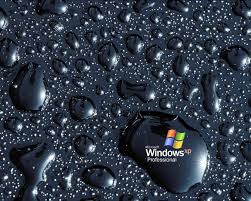Windows Desktop Backgrounds Biography
A computer simulation, a computer model, or a computational model is a computer program, or network of computers, that attempts to simulate an abstract model of a particular system. Computer simulations have become a useful part of mathematical modeling of many natural systems in physics (computational physics), astrophysics, chemistry and biology, human systems in economics, psychology, social science, and engineering. Simulation of a system is represented as the running of the system's model. It can be used to explore and gain new insights into new technology, and to estimate the performance of systems too complex for analytical solutions.
Computer simulations vary from computer programs that run a few minutes, to network-based groups of computers running for hours, to ongoing simulations that run for days. The scale of events being simulated by computer simulations has far exceeded anything possible (or perhaps even imaginable) using traditional paper-and-pencil mathematical modeling. Over 10 years ago, a desert-battle simulation, of one force invading another, involved the modeling of 66,239 tanks, trucks and other vehicles on simulated terrain around Kuwait, using multiple supercomputers in the DoD High Performance Computer Modernization Program Other examples include a 1-billion-atom model of material deformation (2002); a 2.64-million-atom model of the complex maker of protein in all organisms, a ribosome, in 2005;and the Blue Brain project at EPFL (Switzerland), begun in May 2005, to create the first computer simulation of the entire human brain, right down to the molecular level.
A computer model refers to the algorithms and equations used to capture the behavior of the system being modeled. However, a computer simulation refers to the actual running of the program which contains these equations or algorithms. Simulation, therefore, refers to an instance where you ran a model. In other words, you wouldn't "build a simulation" you would "build a model", but you could either "run a model" or "run a simulation". Model and simulation are often used interchangeably and the difference between them is trivial.The external data requirements of simulations and models vary widely. For some, the input might be just a few numbers (for example, simulation of a waveform of AC electricity on a wire), while others might require terabytes of information (such as weather and climate models.
Because of this variety, and that many common elements exist between diverse simulation systems, there are a large number of specialized simulation languages. The best-known of these may be Simula (sometimes Simula-67, after the year 1967 when it was proposed). There are now many others.
Systems that accept data from external sources must be very careful in knowing what they are receiving. While it is easy for computers to read in values from text or binary files, what is much harder is knowing what the accuracy (compared to measurement resolution and precision) of the values is. Often it is expressed as "error bars", a minimum and maximum deviation from the value seen within which the true value (is expected to) lie. Because digital computer mathematics is not perfect, rounding and truncation errors will multiply this error up, and it is therefore useful to perform an "error analysis"[5] to check that values output by the simulation are still usefully accurate.
Even small errors in the original data can accumulate into substantial error later in the simulation. While all computer analysis is subject to the "GIGO" (garbage in, garbage out) restriction, this is especially true of digital simulation. Indeed, it was the observation of this inherent, cumulative error, for digital systems that is the origin of chaos theory.








A computer simulation, a computer model, or a computational model is a computer program, or network of computers, that attempts to simulate an abstract model of a particular system. Computer simulations have become a useful part of mathematical modeling of many natural systems in physics (computational physics), astrophysics, chemistry and biology, human systems in economics, psychology, social science, and engineering. Simulation of a system is represented as the running of the system's model. It can be used to explore and gain new insights into new technology, and to estimate the performance of systems too complex for analytical solutions.
Computer simulations vary from computer programs that run a few minutes, to network-based groups of computers running for hours, to ongoing simulations that run for days. The scale of events being simulated by computer simulations has far exceeded anything possible (or perhaps even imaginable) using traditional paper-and-pencil mathematical modeling. Over 10 years ago, a desert-battle simulation, of one force invading another, involved the modeling of 66,239 tanks, trucks and other vehicles on simulated terrain around Kuwait, using multiple supercomputers in the DoD High Performance Computer Modernization Program Other examples include a 1-billion-atom model of material deformation (2002); a 2.64-million-atom model of the complex maker of protein in all organisms, a ribosome, in 2005;and the Blue Brain project at EPFL (Switzerland), begun in May 2005, to create the first computer simulation of the entire human brain, right down to the molecular level.
A computer model refers to the algorithms and equations used to capture the behavior of the system being modeled. However, a computer simulation refers to the actual running of the program which contains these equations or algorithms. Simulation, therefore, refers to an instance where you ran a model. In other words, you wouldn't "build a simulation" you would "build a model", but you could either "run a model" or "run a simulation". Model and simulation are often used interchangeably and the difference between them is trivial.The external data requirements of simulations and models vary widely. For some, the input might be just a few numbers (for example, simulation of a waveform of AC electricity on a wire), while others might require terabytes of information (such as weather and climate models.
Because of this variety, and that many common elements exist between diverse simulation systems, there are a large number of specialized simulation languages. The best-known of these may be Simula (sometimes Simula-67, after the year 1967 when it was proposed). There are now many others.
Systems that accept data from external sources must be very careful in knowing what they are receiving. While it is easy for computers to read in values from text or binary files, what is much harder is knowing what the accuracy (compared to measurement resolution and precision) of the values is. Often it is expressed as "error bars", a minimum and maximum deviation from the value seen within which the true value (is expected to) lie. Because digital computer mathematics is not perfect, rounding and truncation errors will multiply this error up, and it is therefore useful to perform an "error analysis"[5] to check that values output by the simulation are still usefully accurate.
Even small errors in the original data can accumulate into substantial error later in the simulation. While all computer analysis is subject to the "GIGO" (garbage in, garbage out) restriction, this is especially true of digital simulation. Indeed, it was the observation of this inherent, cumulative error, for digital systems that is the origin of chaos theory.
Windows Desktop Backgrounds
Windows Desktop Backgrounds
Windows Desktop Backgrounds
Windows Desktop Backgrounds
Windows Desktop Backgrounds
Windows Desktop Backgrounds
Windows Desktop Backgrounds
Windows Desktop Backgrounds
Windows Desktop Backgrounds
Unlock Window 7 Desktop Backgrounds
Windows Xp: Changing The Windows Desktop Background (For Noobs)
No comments:
Post a Comment